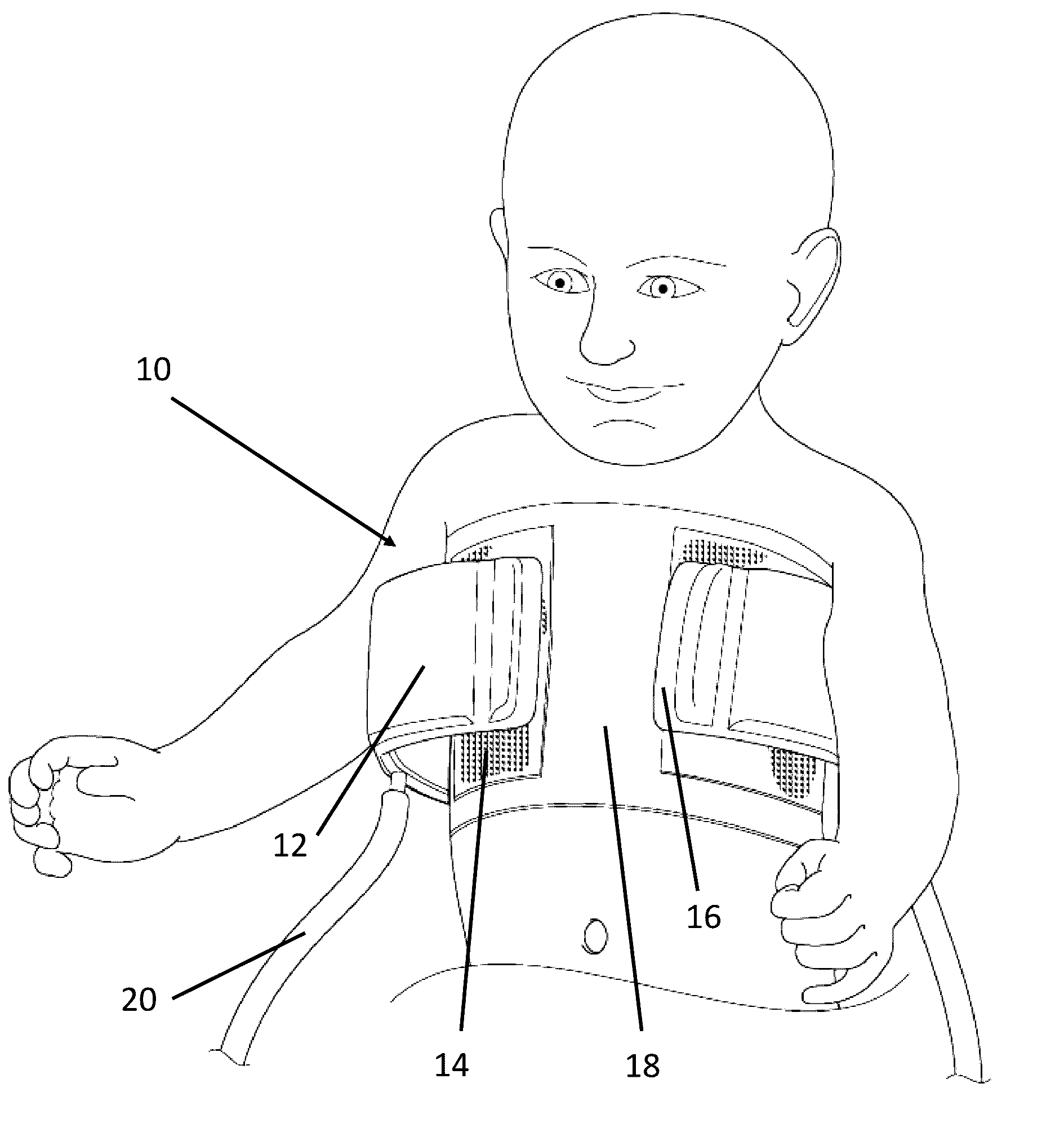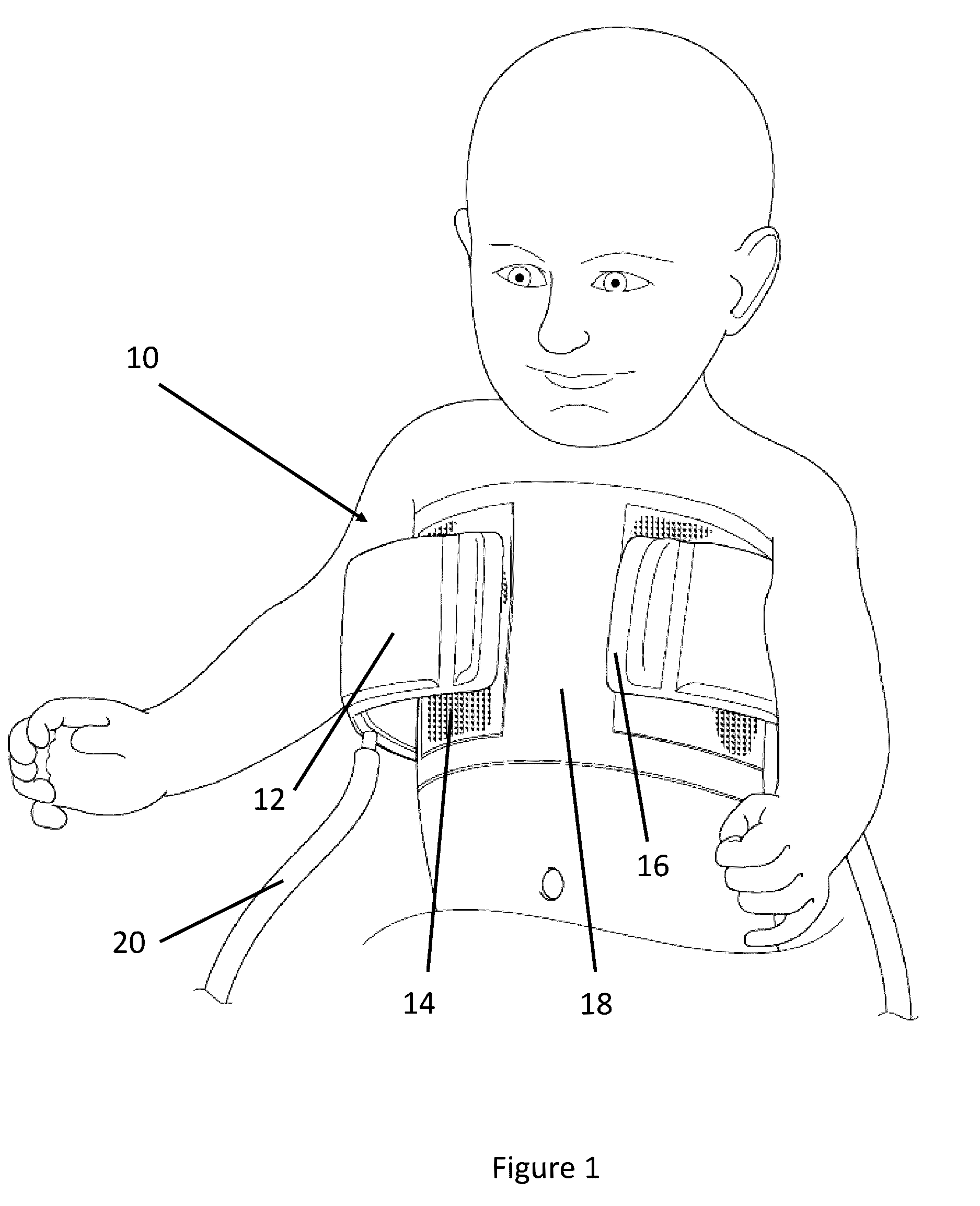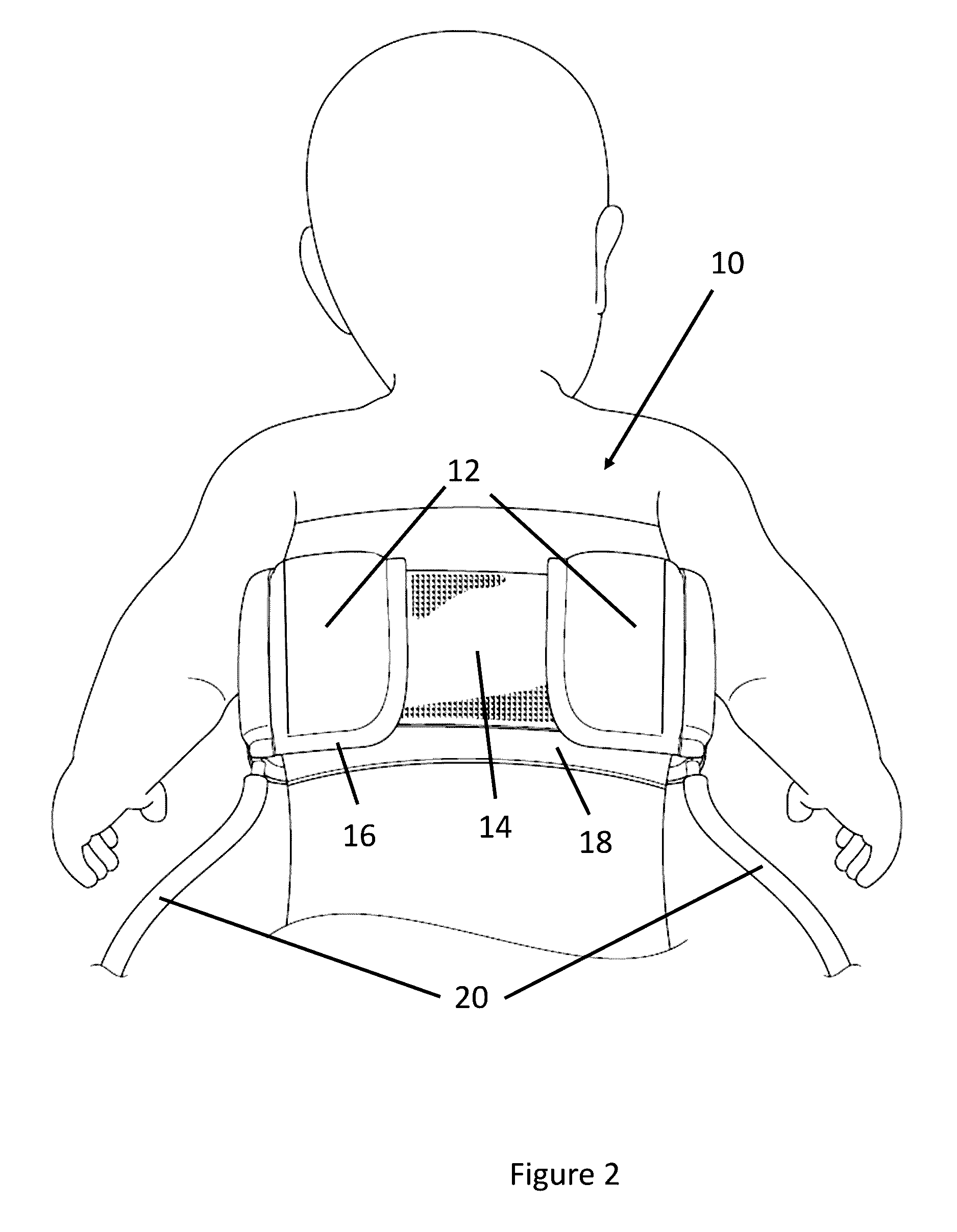Neonatal Chest Splint for Applying Negative Distending Pressure
a chest splint and negative technology, applied in the field of neonatal chest splints for applying negative distending pressure, can solve the problems of affecting the quality of life of newborn babies, and prone to collapse during spontaneous respiration, so as to achieve negative distending pressure, negative distending pressure, and negative distending pressur
- Summary
- Abstract
- Description
- Claims
- Application Information
AI Technical Summary
Benefits of technology
Problems solved by technology
Method used
Image
Examples
experimental examples
[0057]An exemplary embodiment of the air-splint similar top that shown in FIGS. 1-4 was used on a suitable mannequin with chest dimension similar to a 0.8 kg infant. The mannequin had an endotracheal tube placed through the mouth into the hollow thoracic cavity. The tube provided the only access to the thoracic cavity, which was otherwise sealed where the diaphragm was situated. The air-splint was sized to correspond to the dimensions of a typical 0.8 kg preterm infant. In other embodiments, the air-splint can be sized for the dimensions of an infant in the range of 500-4000 grams. However, the air-splint is not meant to be limited to any specific shape or size described herein, and can be any shape or size as would be understood by a person skilled in the art.
[0058]Ventilation was simulated on the mannequin by inflating the cuffs with a -syringe. Enough pressure was generated to inflate the cuffs so that the anterior chest wall rise could be observed. As the chest cavity of the man...
PUM
 Login to View More
Login to View More Abstract
Description
Claims
Application Information
 Login to View More
Login to View More - R&D
- Intellectual Property
- Life Sciences
- Materials
- Tech Scout
- Unparalleled Data Quality
- Higher Quality Content
- 60% Fewer Hallucinations
Browse by: Latest US Patents, China's latest patents, Technical Efficacy Thesaurus, Application Domain, Technology Topic, Popular Technical Reports.
© 2025 PatSnap. All rights reserved.Legal|Privacy policy|Modern Slavery Act Transparency Statement|Sitemap|About US| Contact US: help@patsnap.com



